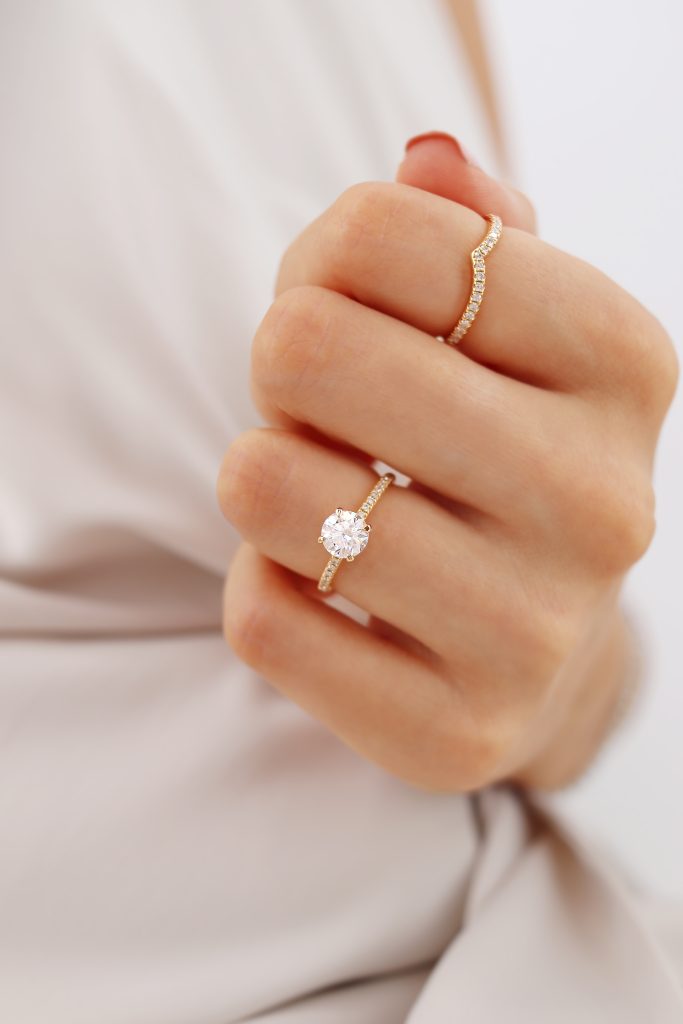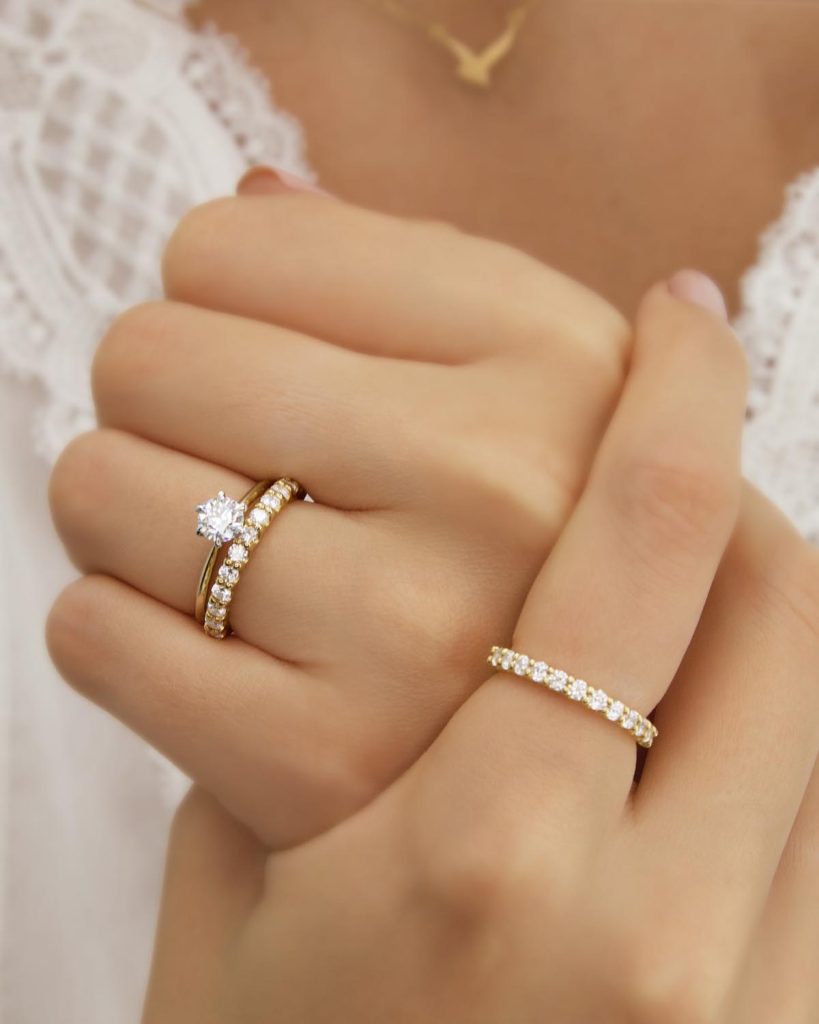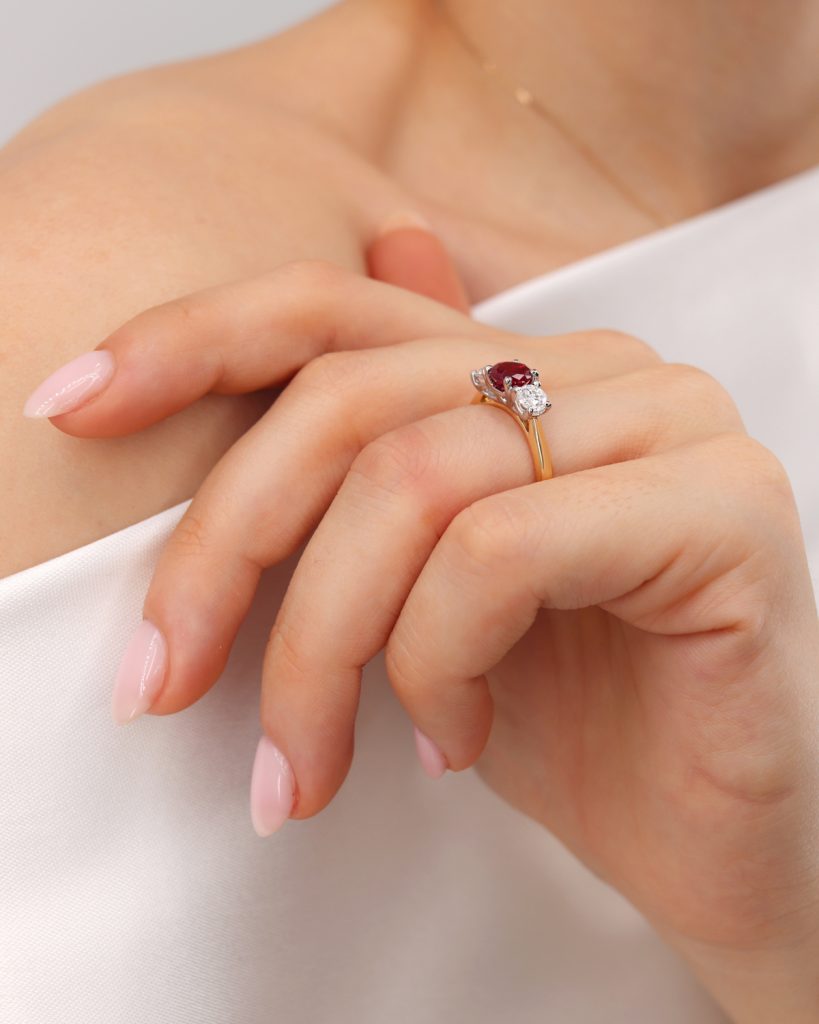Gold is having a resurgence – not just in fashion but in fine jewellery, too. After years of cool-toned metals dominating engagement ring design, yellow and mixed golds are taking centre stage again. What was once seen as traditional is now being reimagined for a new generation: bold, expressive, and effortlessly chic.
As we move into 2026, gold engagement rings are becoming the ultimate symbol of timeless style with a modern twist. Designers are blending vintage references with fresh silhouettes, creating pieces that feel both nostalgic and current – the kind of rings that turn heads without ever shouting for attention.
A Shift in Taste
Trends in jewellery often mirror what’s happening in fashion and culture. For the past decade, minimalist silver tones and platinum settings reflected the sleek, pared-back aesthetic dominating runways. But as individuality and personal expression take priority again, gold has re-emerged as a statement of warmth and confidence.
In 2026, gold isn’t simply a colour choice – it’s an attitude. It feels rich, authentic, and alive. Whether worn in glossy yellow, soft rose, or muted white gold, each tone tells a slightly different story. Yellow gold speaks of tradition and optimism, rose gold adds romance and approachability, and white gold blends modern polish with quiet sophistication.
The Evolution of Gold in Engagement Rings
Gold has long been the backbone of fine jewellery, but its modern revival goes beyond nostalgia. Designers are experimenting with form and finish in ways that feel distinctly contemporary.
- Mixed Metals: Combining white, yellow, and even rose gold in a single design is one of 2026’s standout trends. These combinations add visual depth, allowing couples to choose rings that match multiple styles or reflect both partners’ tastes.
- Textured Finishes: High polish will always have its place, but brushed, satin, and hammered textures are stepping into the spotlight. They add character and a handcrafted quality that feels personal.
- Sculptural Silhouettes: Expect to see more fluid, organic forms that wrap around the finger like wearable art. These pieces often pair gold with unusual stone shapes – from elongated cushions to soft ovals – creating a balance between structure and spontaneity.
- Sustainability Meets Luxury: Recycled gold and ethical sourcing are now must-haves rather than bonuses. Consumers are asking where their jewellery comes from and choosing brands that prioritise transparency and craftsmanship over mass production.
Pairing Gold with Modern Gemstones
While diamonds will always have a place at the heart of engagement design, 2026 is about experimentation. Coloured stones – from pale sapphires to green tourmalines – are appearing more often alongside gold settings. Their subtle hues bring warmth and depth that white stones sometimes can’t achieve.
Lab-grown diamonds continue to dominate the market, especially when paired with yellow or rose gold, where their clarity contrasts beautifully with the metal’s richness. Moissanite remains a favourite for couples seeking maximum brilliance, its crisp sparkle popping against warmer tones.
Gold’s versatility means it complements virtually every gemstone. The result? Rings that feel intentional, personal, and unmistakably modern.
Influences from Fashion and Culture
Jewellery rarely exists in isolation – it reflects the mood of the moment. The return of gold in 2026 aligns perfectly with wider fashion trends: soft tailoring, vintage revival pieces, and an emphasis on longevity over disposability. There’s a growing desire for design with substance – something that feels crafted rather than produced.
Social media has also played its part. Gold engagement rings photograph beautifully under warm light, capturing that sun-lit glow designers and influencers alike love to showcase. The popularity of nostalgia-driven aesthetics – from ’90s silhouettes to art-deco details – has further cemented gold’s comeback as both aspirational and wearable.
Shapes and Settings Defining the Year
Designers are leaning into unexpected combinations that challenge traditional boundaries.
- Elongated stones such as emerald, oval, and marquise shapes are the go-to for a refined yet statement look.
- Toi et Moi settings, featuring two stones side by side, remain a key trend, symbolising individuality and togetherness.
- East-West settings, where stones sit horizontally, give classic cuts like emeralds and cushions a striking new edge.
- Bold bezels are replacing delicate claws, offering a modern architectural feel that suits the strength of gold perfectly.
The common thread across all these styles is confidence – rings that celebrate bold self-expression rather than following quiet tradition.
Why Gold Is Here to Stay
What makes gold’s revival more than a passing trend is its adaptability. It moves effortlessly between eras and aesthetics. A minimalist can choose a clean, brushed gold band with a sleek oval diamond, while a vintage enthusiast might opt for intricate detailing and milgrain edges. Both look entirely different, yet both feel timeless.
There’s also a sense of permanence about gold. It ages gracefully, developing a subtle patina that only enhances its charm. It’s a metal that tells a story – of love, wear, and memory – growing more beautiful the longer it’s part of your life.
A Modern Classic for a New Generation
As 2026 approaches, engagement rings are moving away from convention and towards personal expression. Gold’s return represents more than a design preference – it’s a reflection of changing values. People are choosing warmth over perfection, individuality over uniformity, and meaning over status.
A gold engagement ring doesn’t need to compete with trends; it is the trend. Whether sleek and sculptural or intricate and romantic, it carries the quiet assurance that true style never goes out of fashion.
Published by HOLR Magazine.





